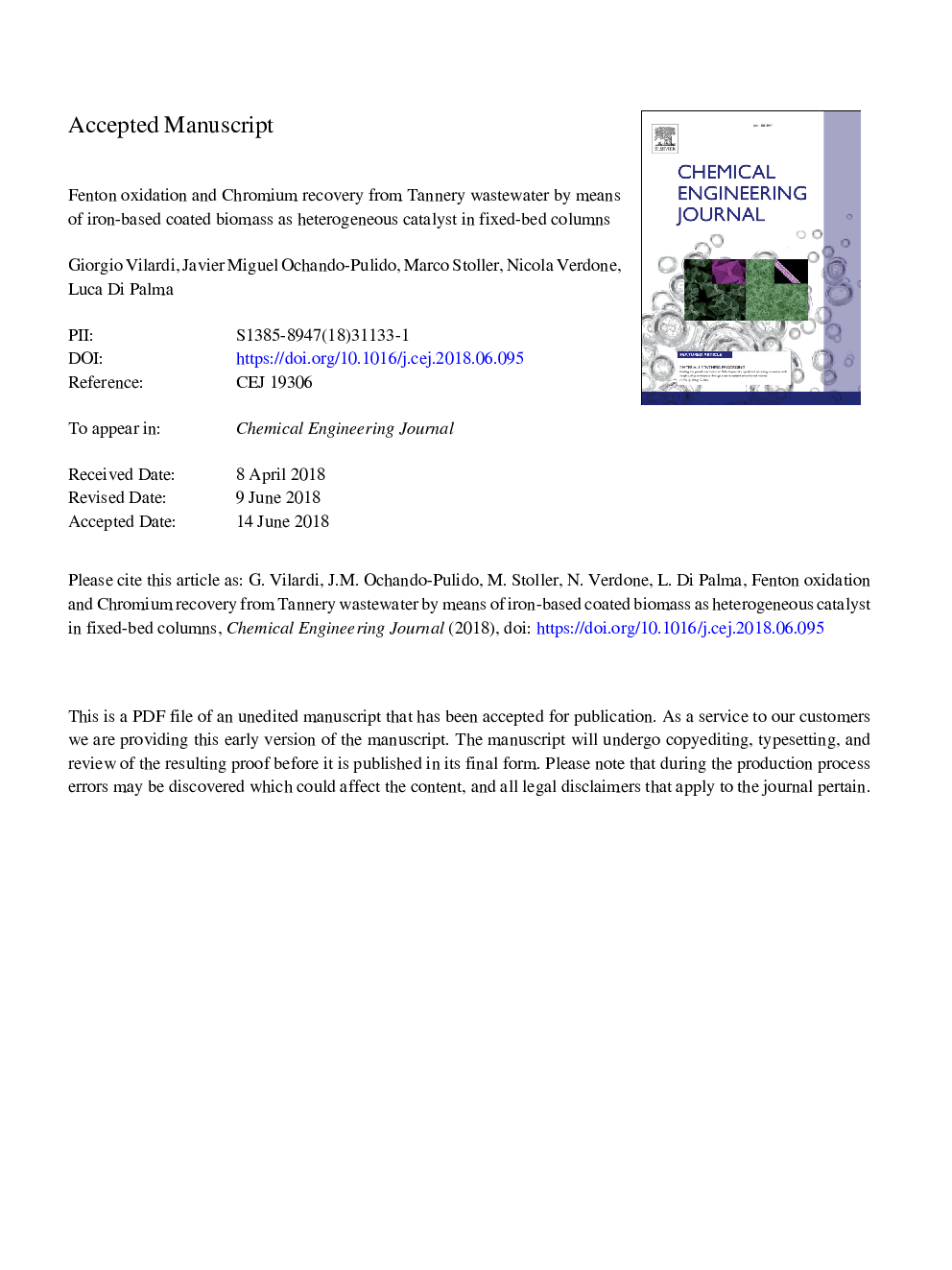| Article ID | Journal | Published Year | Pages | File Type |
|---|---|---|---|---|
| 6578189 | Chemical Engineering Journal | 2018 | 37 Pages |
Abstract
This work deals with the treatment of a tannery wastewater by a mixed-iron coated olive stone bio-sorbent particles. Olive stones were used as the support to zero-valent iron and magnetite nanoparticles to develop a new material for the removal of chromium, organic matter and total phenols from the wastewater. The optimal operating conditions were determined in batch reactors, after which the process was scaled-up using fixed-bed columns in series. The maximum adsorption capacity for both Cr(III) and Cr(VI), up to 8.37 and 4.29â¯mgâ¯gâ1, was attained for a sorbent mass concentration of 4â¯gâ¯Lâ1, meaning a total chromium adsorption capacity of 12.66â¯mgâ¯gâ1, whereas equilibrium contact time was found to be 120â¯min. The combination of coated olive stones and hydrogen peroxide allowed to develop an heterogeneous Fenton process, that led to reach a COD removal efficiency of 58.4% and a total phenols removal of 59.2%, at H2O2/COD (w/w)â¯=â¯0.875. In addition, re-use of the coated olive stones by regeneration with NaOH and C2H2O4 solutions after 5 cycles was reported. The column process was successfully described by BDST and Thomas models.
Related Topics
Physical Sciences and Engineering
Chemical Engineering
Chemical Engineering (General)
Authors
Giorgio Vilardi, Javier Miguel Ochando-Pulido, Marco Stoller, Nicola Verdone, Luca Di Palma,
